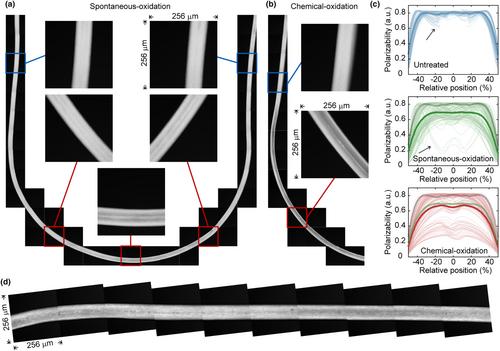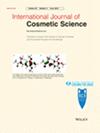Optical evaluation of internal damage to human hair based on second near-infrared window polarization microscopy
Abstract
Objective
Hair beauty treatments glorify human life. As a side effect, there is a risk of deteriorating the health of the hair. Optically polarized microscopy has been used for many decades to evaluate hair conditions owing to its ease of use and low operating costs. However, the low biopermeability of light hinders the observation of detailed structures inside hair. The aim of this study is to establish an evaluation technique of internal damages in a hair by utilizing a near-infrared (NIR) light with a wavelength of 1000–1600 nm, called “second NIR window”.
Methods
We built a laser scanning transmission microscope system with an indium gallium arsenide detector, a 1064 nm laser source, and optical circular polarization to visualize the anisotropy characterization of keratin fibres in hair. Samples of Asian black hair before and after bleaching, after permanent-waving, after lithium bromide (LiBr) treatment, and after heating was observed. Some parameters reflecting intra-hair damage were quantitatively compared with the parameters in digitally recorded images with analytical developments.
Results
The light transmittance of black hair was dramatically improved by utilizing the second NIR window. Numerical analysis of circular polarization in hair quantified the internal damage in chemically or thermally treated hair and found two different types of damage. The present method enabled quantitative evaluation of the condition changes in the cortex; for example, a decrease in circular polarizability by LiBr treatment and restoration by replacing the LiBr solution with water. In addition, black speckles were observed after the heat treatment. Longer heating and wetting times increased the appearance probability and size of the speckles. According to quantitative analyses, the emergence of black spots was independent of polarizability changes, indicating that they were not pores.
Conclusion
Circular polarization microscopy based on near-infrared optics in the second NIR window provides an effective evaluation method for quantifying intra-hair damage caused by cosmetic treatments. The present method provides noninvasive, easy, and inexpensive hair evaluation and has potential as a gold standard in hair care research/medical fields.


 求助内容:
求助内容: 应助结果提醒方式:
应助结果提醒方式:


